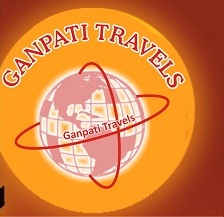Chandigarh - a city of Charming Contrast; a
pulsating modern town famous for its architecture and landscape. “Chandigarh”
derives its name from the temple of “Chandi” located in the
vicinity of the site selected for the city. The deity ‘Chandi’,
the goddess of power and a fort or ‘garh’ lying beyond the temple
gave the city its name. Chandigarh was constituted a Union Territory of
India on 1st November 1966.

It
is the first planned city of India designed by Le Corbusier, an eminent
architect and urban theorist. The city’s pollution-free air, the short
distance, the wide tree lined boulevards and avenues, lakes all contribute
to making Chandigarh a charming place for residents and visitors. Chandigarh
has the distinction of having a unique world-acclaimed Rock Garden
constructed by Nek Chand.
The diverse population of this territory
has made this city a lively and cosmopolitan city. Today this city has
become one of the IT destinations in India. The Nehruvian idealism at its
core is in stark contrast to the industrial development on the outskirts.
History Chandigarh has a pre-historic past.
The sloping plains on which modern Chandigarh city exists, was in the
ancient past, a wide lake ringed by a marsh. The fossils excavated from the
site indicate a large variety of aquatic and amphibian life which was
supported by that environment. About 8000 years back the area was inhabited
by the Harappans.
The history of modern Chandigarh is not very
old. The place was in the province of Punjab with its capital at Lahore. But
due to the division of India and Pakistan in the year 1947, Lahore came in
the side of Pakistan leaving Punjab without having a capital. To fill up
this vacancy the government of India decided to construct a new capital in
the year 1948. An area of 114.59 sq. km was approved at the foot of the
Shivalic hills in Ropar district. An existing village gave its name to the
new capital. The name is derived from two words i.e. Chandi-Goddess of power
and Garh-Fortress. The then prime minister of India Pandit Jawaharlal Nehru
supported the project and took interests in its execution. The Swiss-French
architect Charles Edouard Jeanneret (Le Corbusier) was the creator of the
city.
This is India’s cleanest city and perhaps Le Corbusier’s
lasting legacy. In March, 1948, the Government of Punjab, in consultation
with the Government of India, approved a 114.59 sq. kms of land at the
foothills of the Shivaliks as the site for the new capital. The location of
the city site was a part of the erstwhile Ambala district as per the 1892-93
gazetteer of District Ambala. The site was selected by Dr.M. S. Randhawa,
the then Deputy Commissioner of Ambala.
The city has a unique
distinction of being the capital of both, Punjab and Haryana while it itself
was declared as a Union Territory and under the direct control of the
Central Government. Chandigarh was due to be transferred to Punjab by an
agreement signed in August 1985 by Late Rajiv Gandhi, the then Prime
minister of India, with Sant Harchand Singh Longowal of the Akali Dal. But
the transfer has been delayed due to a pending agreement that should be made
to offer a district of Punjab to Haryana in exchange.
Parks
and Gardens Rock Garden:This unique
sculpture garden was created by the city's internationally acclaimed artist
Nek Chand and spreads over an area of 64 acres. The visual delights and the
strange history of Rock Garden has charmed millions of visitors. It was
first opened to the public in 1976. Nek Chand began to transform a dump of
discarded building materials into a Rock Garden. He was a road inspector of
the city’s Public Works Department. He kept the garden a closely
guarded secret.....never suspecting that one day critics would praise his
unique works and he would exhibit them in Paris's Museum of Modern Art and
in other cities around the world.
Vashisht Hot
Sulphur Spring: About 3.2 km away from Manali bus stand across the
Beas river situated at an altitude of 1982 m (6200 ft), just down below the
temple are hot Sulphur Springs named as Vashisht. Nearby is a pyramidal
stone temple dedicated to Vashistha.
Zakir Rose
Garden: This garden was created in 1967 under the expert guidance
of Dr M.S. Randhawa, Chandigarh's first Chief Commissioner and is named
after India's President, Zakir Hussain. This is the largest Rose Garden in
Asia and is spread over an area of 27 acres. 17,000 plants representing some
1,600 varieties of roses as well as several fountains can be seen here. The
annual Rose festival, an event listed on the national calendar of fairs and
festivals is celebrated here. This is one of the main cultural events of the
city and attracts thousands of visitors from all over the country. The Zakir
Rose Garden opens on all days.
Bougainvillea Garden:
The garden is devoted to hundreds of bougainvillea varieties. The
creepers cover a wide assortment of arches, bowers, pavilions and arcades.
Fitness Trails wind through this garden, designed to give each person who
completes the route a complete exercise regimen by the time they reach the
end. The annual Bougainvillea Show is held here. It is open on all days and
is spread over twenty acres in sector 10.
Children's
Traffic Park: This park has been designed for children, keeping in
mind safety from speeding traffic and is used by them to learn cycling and
road safety. Concrete paths are laid out through out the park to form "roads
and intersections" and are furnished with all sorts of road signs. It
is open on all days. The 12 ½ acre park also contains an exhibition
Hall and Lecture cum Cinema hall that offers popular shows to the children
visiting the park.
Sukhna Lake:A man-made
lake spread over an area of 3 square kilometers is located on the northern
border of the city. At the entrance to the park one reads Corbusier's Edict
of the Lake. “The founders of Chandigarh have offered this lake and dam
to the citizens of the new city so that they may escape the humdrum of the
city life and enjoy the beauty of nature in peace and silence”.
The
tree lined shady promenade around the lake is a favorite spot to stroll and
enjoy the tranquil ambience. Paddle-boats and yachting are another pleasant
diversion. One may simply relax at the cafe run by the Chandigarh Tourism
Development Corporation.
How to Reach ThereBy
Air : A man-made lake spread over an area of 3 square kilometers is
located on the northern border of the city. At the entrance to the park one
reads Corbusier's Edict of the Lake. “The founders of Chandigarh have
offered this lake and dam to the citizens of the new city so that they may
escape the humdrum of the city life and enjoy the beauty of nature in peace
and silence”. The tree lined shady promenade around the lake is a
favorite spot to stroll and enjoy the tranquil ambience. Paddle-boats and
yachting are another pleasant diversion. One may simply relax at the cafe
run by the Chandigarh Tourism Development Corporation.
By
Rail : Chandigarh is also an important railway station located at a
distance of 8 km from the city centre. The twice daily Shatabdi, Jan
Shatabdi and Himalayan Queen connect New Delhi and Chandigarh. Paschim
Express connects the city to Mumbai, Sadbhavna to Lucknow, Kerala Sampark
Kranti to Kerala and Chennai Express to Chennai.
By
Road : Chandigarh is also connected by state and national highways.
National Highway No.22 and 21 passes through Chandigarh. Government and
private buses ply regularly to/from Chandigarh.






